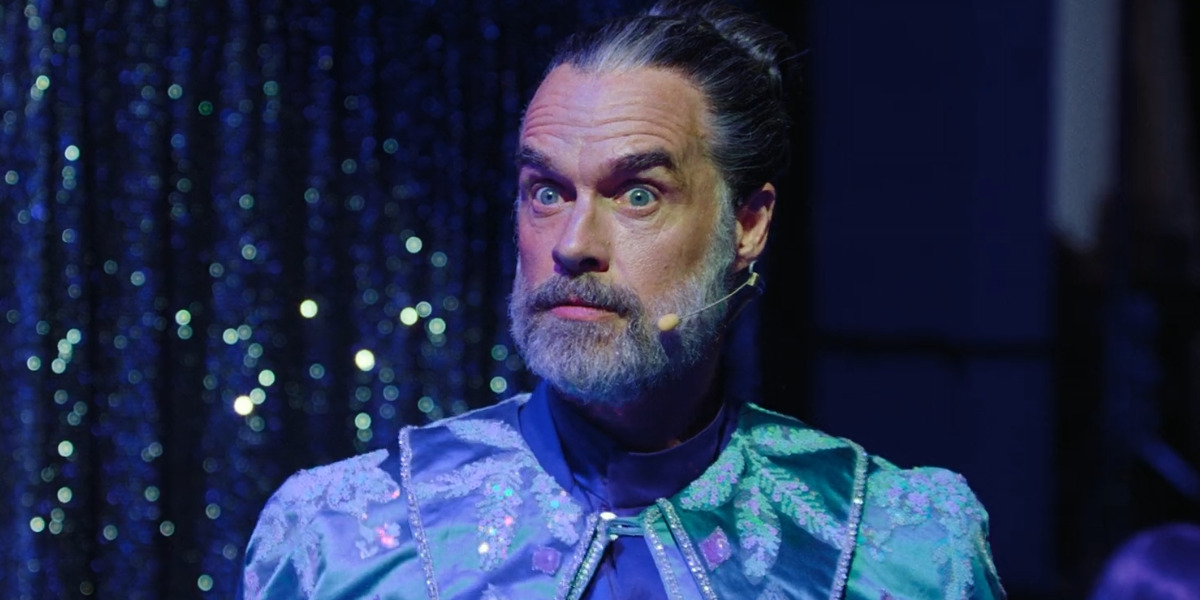Geremy Jasper’s rock opera musical ‘O’Dessa’ is an ambitious dystopian film that charts the titular character’s hero’s journey of bringing hope into an otherwise hopeless world. O’Dessa is a young farm girl with a musical soul who traverses into Satylite City, the last civilized society of its kind, in search of a family heirloom. However, she ends up finding something much more precious when her path crosses with Euri Dervish, a musician who might just be the love of the girl’s life. Nonetheless, Satylite City is a dangerous place, governed by the tyrannical Plutonovich, an entertainer who has a monopoly on everyone’s attention. Therefore, once Euri becomes his prisoner, taken to the feared Onderworld, O’Dessa finds herself reconciling with a prophecy that speaks of her heroic destiny. As a result, Satylite City and Onederworld become two of the most crucial places that inform the film’s worldbuilding.
Onederworld: O’Dessa’s Version of the Underworld
‘O’Dessa’ is a film that has a loose basis in the Greek myth of Orpheus and Eurydice, two lovers who are cruelly torn apart from one other. As such, O’Dessa’s journey of traveling into Satylite City and finding love is meant to parallel Orpheus, the legendary musician’s story of falling in love with the beguiling Eurydice. Likewise, the former’s separation from Euri on their wedding day parallels the tragic end of the Greek lovers’ mortal romance. Thus, it stands to reason that O’Dessa’s climactic journey to Onederworld, where she faces off against the horrid tyrant Plutonovic, is also a reference to Orpheus’ tale, namely his journey into the Underworld, Hades’ domain. It is worth noting that Hades’ Roman counterpart is known as Pluto.

In ‘O’Dessa,’ Onederworld is an island off the shore of Satylite City, where Plutonovic resides. He also broadcasts his attention-stealing, brainwashing propaganda show from this island, which also serves as the home of torture for those who dare rebel against their leader. As a result, it possesses an ethereal as well as fearful connotation. Furthermore, it’s generally understood that those who are taken to Onederworld never return to the City. This creates a separation between the two places, casting Plutonovic’s adobe in a mysterious haze. Furthermore, the ferry utilized to make the trip from Satylite City to the Island is also reminiscent of Charon’s ferry, which is said to lead human souls into the afterlife following their death. Therefore, Onederworld seems to seamlessly fall in line with the perception of the Underworld as per Greek Mythology.
Satylite City is Confined to O’Dessa’s Dystopian World
Off-screen, Satellite City is the title given to any smaller city that exists on the outskirts of a metropolitan town. However, in ‘O’Dessa’ and its familiar dystopian world, Satylite City is the last-standing pillar of human civilization that a tyrant ruler overruns. Neon light signs, shady street corner shops, and addiction-addled residents make up the nightlife of the town. Meanwhile, the city retains a bleak reality under the morning sun with gravel-studded shores, angry mobs, and eccentric details. Visually, the place harks back to numerous pseudo-futuristic dystopian societies that the audience would have seen in other media.
From the Barterblock in ‘Mad Max,’ to the dystopian Chicago in Divergent and the various districts in Panem from ‘The Hunger Games,’ Satylite City retains a familiar aesthetic of near-futuristic elements with run-down modern sensibilities. As such, the place is bound to evoke a sense of familiarity, even though the city is an entirely fictitious location. In real life, Satylite City is likely a composite of the film’s numerous filming locations, New York’s Buffalo, Croatia’s Zagreb, and the efforts of set designer Nika Vojvoda. On the other hand, it also lacks a prominent connection to Thrace, the Greek city where Orpheus and Eurydice’s tale takes place. Consequently, the fictional town has no tangible roots in real life.
Read More: O’Dessa Ending, Explained


